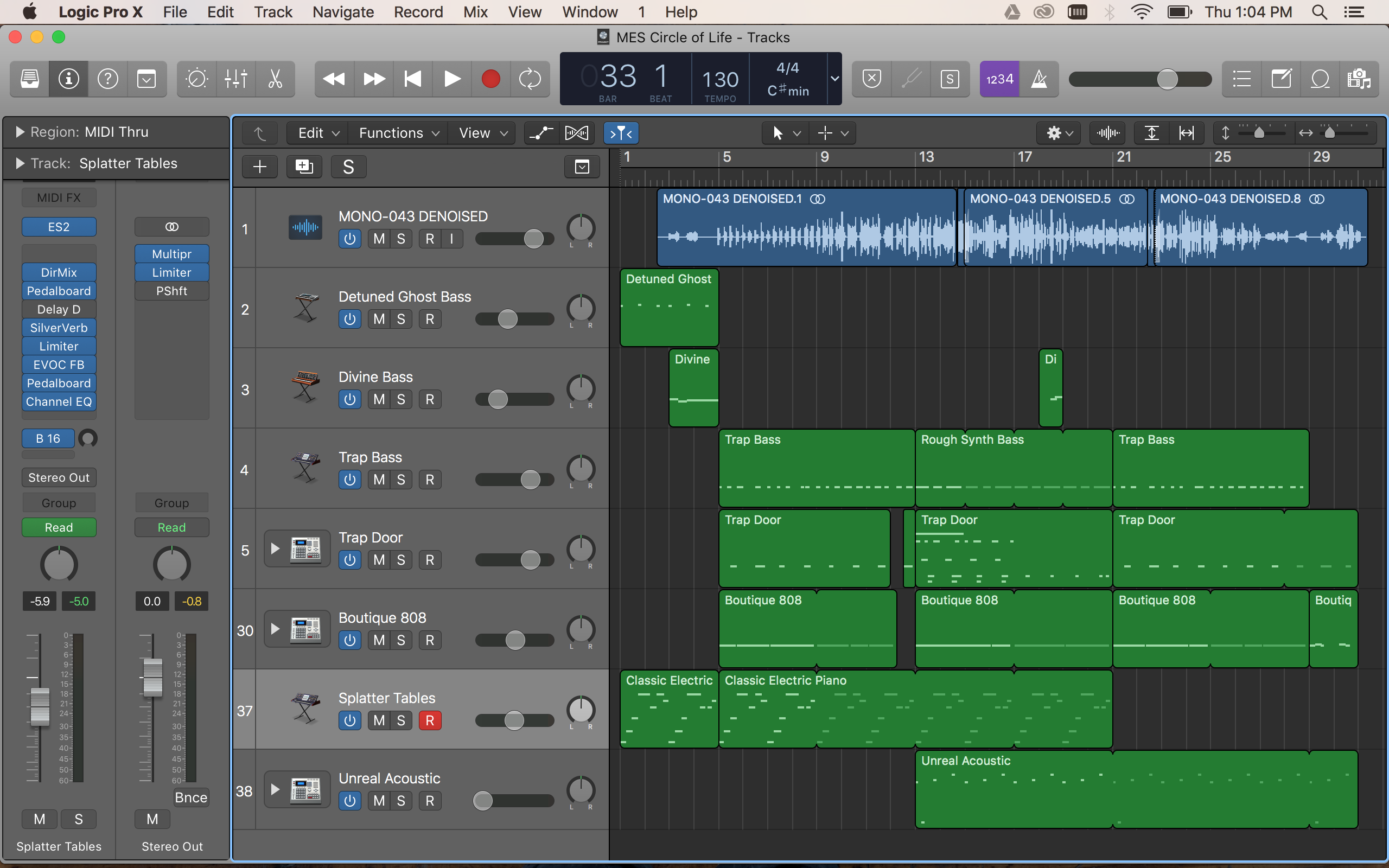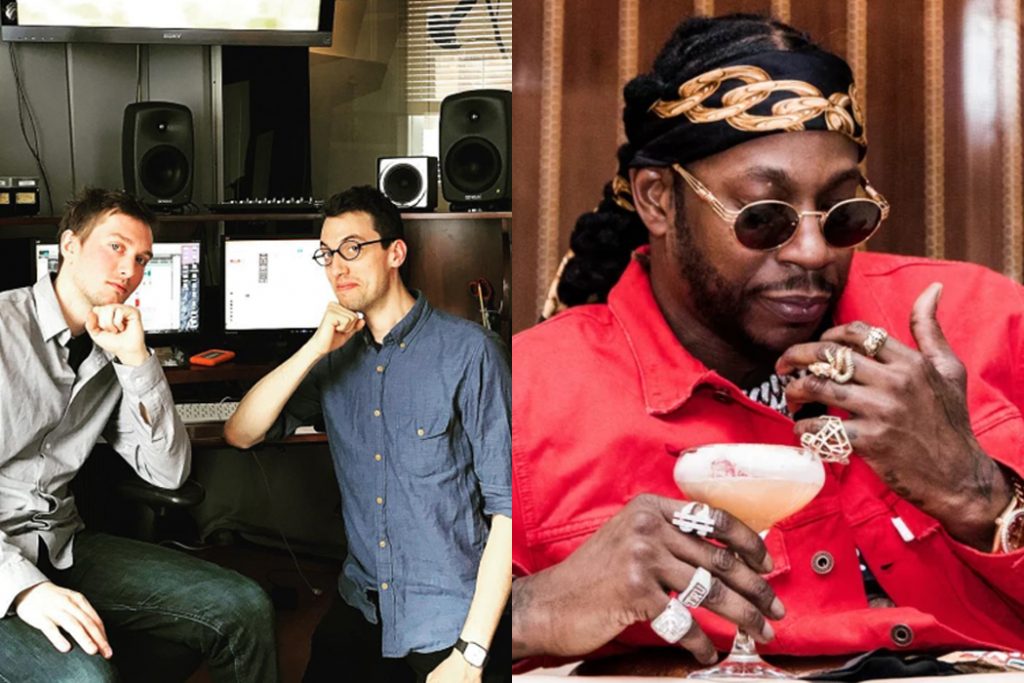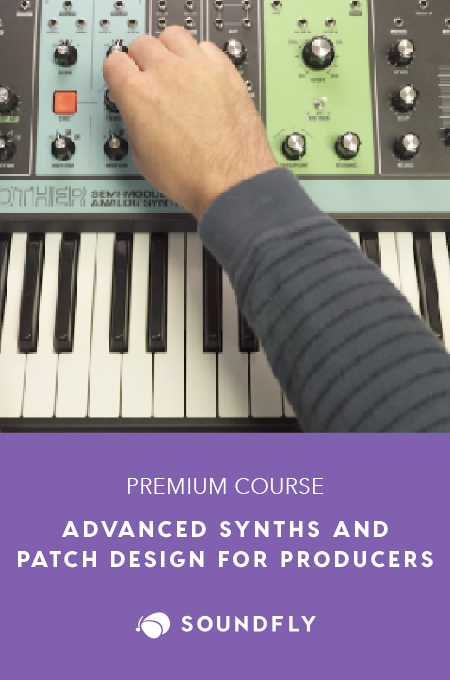Former Soundfly staffer Adam Lerman is one of the producers behind Viceland’s latest viral short. Take a listen to his track and read on to explore how he made it!
I’m at my desk, and Riley Cecil Taggart has his head in his hands. He’s staring at a blank screen with nothing but a title: “Circle of Life Interstitial.” We work at Mustache, a creative agency and production company, and in addition to social campaigns, commercials, and branded content, we also produce a hit show for VICELAND called Most Expensivest with the rapper 2 Chainz. Riley, the head writer for the show, is a comedic genius, and prolific to say the least. So I was a little surprised to see him facing off with the soul-crusher known as writer’s block.
As I care deeply for Riley, I rolled my chair a few inches in and quietly asked, “You doing ok?”
“We have to write an interstitial about the food chain, and I have no idea what to do. There’s like, a million of those already.”
“How long have you been staring at the screen?”
“What time is it?”
“Noon.”
“Since 10.”
This was surprising. As I said nine sentences ago, Riley is prolific. He thrives on absurd humor. Most Expensivest is a ridiculous show, super fun, and the editing/post process is where a lot of the personality of the show really comes alive. Needless to say, as a result, the writers get a lot of creative freedom. And while two hours isn’t long for writer’s block, it’s not normal for Riley.
The task was pretty simple: We wanted to talk about little fish eating algae, and medium fish eating little fish, and big fish eating medium fish, just like everyone else. But we needed an in. So I asked him the only question I ever ask when we’re stumped for creative ideas.
“What if we did a trap song?”
From over the horizon of his strong but delicate fingers, Riley’s eyes appeared like two suns over Tatooine. Warm, optimistic. A new hope.
“What would that sound like?”
I had just watched the SNL sketch “Friendos,” and the clipped style of Migos popped into my head. The 16th-note delivery in the chorus of “Walk It Talk It” was so delightful to me, just these little rapid-fire blasts of words. Wouldn’t it be funny if we laid out a scientifically literate explanation of the marine life food chain, but with all this swagger and attitude? So that’s how we got: “Teeny tiny fish, eating algae, then a slightly bigger fish…”
Cool, so we knew that we wanted to establish algae as the bookend, since it was the smallest organism we’d cover in the song. As long as we came back to algae, we were good. That got us excited. I pulled up Keezy’s Drummer app and made a really simple hip-hop beat. I love Keezy. And I love that people like Reggie Watts and Dan Deacon love it, too. They’re such weirdos, and their music is so unique and one of a kind. If people like them sign off on something, I tend to like those things.
You can listen to that really simple beat here:
“Walk It Talk It” is 146 BPM, but I set ours to 130 BPM to give us a little freedom to write slowly. Riley and I jumped into a conference room and spent the next hour and a half just pouring lyrics out onto a page. There’s so much stuff we wish we could have included, but we needed to keep the track at about a minute, given the average length of the show’s interstitials.
We had riffs on Dr. Seuss (“He’s eating one fish two fish / red fish blue fish / old fish and new fish / man what’s wrong with you fish?”) and a whole letter of condolence to the parents of a seal eaten by a shark (“Dear Mr. and Mrs. Seal / I would like to appeal / to your deepest emotions / about life in the ocean / cuz you know this s**t is real”) but we just didn’t have the time. Also, those moments were sort of pauses in the narrative, more about what a fish is doing or feeling, and less about the food chain itself. We needed to stay on track.
We got from small fish to medium fish, to seals, to sharks, and then… well, who eats sharks? Humans! No one bigger than humans eats humans, but you know who’s smaller than humans that eats humans? Worms. And they create organic waste, which we sort of zhuzhed to include carbon — namely CO₂ — which microalgae eat. Did we have the real estate to specify microalgae, or carbon dioxide vs just carbon? No. As a science communication advocate, does this pain me? Yes. But, sometimes you need to start simple, which means getting things basically right, in order to get people to buy in.
Nevertheless, we got our narrative! From algae to algae, and all things in between.
That night, after recording a scratch vocal into my headphone mic, I spent about three hours watching tutorials on how to make trap beats. It was clear that I needed a good instrumental loop for the mid-tones, something kind of trippy and echo-y. So many trap songs have a loop that just sounds like it’s on sizzurp. You’ve got a tripped out piano or wobbly bells or something that’s really spacious and out there, and sometimes that’s accompanied by a second melodic layer that lives in the higher frequencies.
I usually work in Logic, so I spent a few hours twisting dials until I found a couple of patches that felt right. There was an Electric Keyboard that reminded me of the opening synths from JAY-Z and Kanye West’s “Ni**as in Paris,” and I gave that some phaser and a slowed down echo — gave it a bit of a spooky feel. And then, you know how every drum patch usually has some kind of a synth in the higher octaves? Well, I found two that felt totally underwater, one for a melodic line at the top, and another for chords when the song picks up. So I tweaked those, and suddenly I had my backbeat melodies. All I needed were a bass line and drums.
I had no idea how to quickly build all the triplets and 32nd-notes of trap-style hi-hats, so I listened to about 20 tracks from different artists, and just started drawing out a few loops, note by note, in Logic. It wasn’t quite perfect, but it actually sounded better when I estimated their location in the beat rather than quantizing them. There’s something to be said about the “human” touch of drawing these in yourself. (Vox actually has a great video about how J Dilla gave his beats on the MPC3000 something of a human touch, and thus, a really unique style.)
After another couple of hours, I had assembled a laid-back version and a more energetic version of the kick/high hats/snare combo. That’s essentially all the instrumentation. The only other layers aside from the bass line are: 1) A super quick crescendo of a synth really low in the mix right before we hear “teeny tiny,” 2) a buzzier synth that plays a “womp womp” after the shark gets eaten, and 3) a siren that drops once when the beat picks up halfway through.

At 2am, I texted Riley to see if he was up. He was excited to hear it… tomorrow. So I FaceTime’d him immediately and forced him to play the song while I watched him listen. He was wewwy happy. I was, too! No more writer’s block for Riley!
There were virtually no changes made to the track after that. We re-recorded the vocals at Flavorlab. The engineer, Dennis Dembeck, mixed the track and brought out so much color in the vocals. He helped give me some direction with the delivery, along with Charlie Marks, our Post Production Producer, and Bobby Johnson, our Post-Production Supervisor. We had a good time.
Here’s the funny thing about the vocal style. It’s all over the place. But purposely so. This song was homage to so many different flows. As mentioned earlier, we start with Migos. But when we get to “What’s that coming? S**t it’s a seal!” we’ve got a comedic, absurd Lonely Island thing going. When we hit “Edible wish / swimming away like the kind of all this,” I started thinking about Kendrick. And after that, “But then the humans put out the nets / all bets are off / that shark is dead!” it gets back to Lonely Island. But right after that, when we get into the whiny “You been eaten / now you in a human being” there’s a touch of Lil Wayne. (I wish I could remember the song that it makes me think of.) Then, right at the end, “And now we’re all carbon / and who’s eating carbon? / but the algae / in the ocean?” we’ve got this a-rhythmic delivery with a mystified voice, which kind of gets to Lil Dicky’s “Pillow Talking.” I tweeted at Lil Dicky about the song. I don’t think he noticed.
After that, one of our editors, Zubaer Khan, put together that great stock footage edit, and a wonderful motion graphics designer named Parris Pierce did the animated titles. Parris does a bunch of animations for Most Expensivest. He and Z just totally got it.
I’d love to know if 2 Chainz has seen the video. I’d love to know what he thinks of the song. It’s gotten over 87K views on Instagram and 121K views on Facebook. That’s the most expensivest views of something I’ve ever made.
But the thing that makes me happiest is how this all came together, which is very representative of how we work at Mustache. Rarely is one thing made by just one person. Obviously, collaboration isn’t rare to TV or digital media, but this small, singular clip was supported and enhanced by so many different people, and getting to be a part of that process was such a pleasure.
Tru.
Improve all aspects of your music on Soundfly.
Subscribe to get unlimited access to all of our course content, an invitation to join our members-only Slack community forum, exclusive perks from partner brands, and massive discounts on personalized mentor sessions for guided learning. Learn what you want, whenever you want, with total freedom.
—
 Adam Lerman is a writer and director trying to make the internet a happier place. He makes commercials, digital series, TV, music videos, branded content, and films of people dancing in place. He believes science communication can be funny. Sometimes he writes comedic music, and most of the time he lives in Brooklyn.
Adam Lerman is a writer and director trying to make the internet a happier place. He makes commercials, digital series, TV, music videos, branded content, and films of people dancing in place. He believes science communication can be funny. Sometimes he writes comedic music, and most of the time he lives in Brooklyn.




